SINCE1976
METROL Growth History
METROL is a precision positioning sensor specialist with its head office and factory located in Tachikawa, Tokyo.
Since its inception in 1976, the company has been developing, manufacturing, and selling a variety of highly original sensors under the motto, "Never imitate competitors".
We boast the world's top share of the "tool setter" market, which detects tool wear in microns on machine tools, and have grown into a top global niche company, doing business with more than 7,000 companies in 74 countries.
The following is a brief history of METROL's technology from its founding to the present.
STORY 01
Founding of METROL
STORY 01
Founding of METROL
The Beginning
In 1976, METROL was founded by Akira Matsuhashi in a small rental factory in Musashino of Tokyo City.
After graduating from the University of Tokyo with a degree in precision engineering, he joined a major optical equipment manufacturer, where he was involved in the design and development of endoscopes (gastroscopes), which are now commonly used.
However, he was disheartened by the shortcomings of a large company where internal politics took precedence over the development of innovative technology and resigned.
After working for a major measurement equipment manufacturer, he founded METROL at an advanced age in his 50s.
Envisioning a Global Brand
STORY 01
Founding of METROL
Envisioning a Global Brand
METROL began with the following aspirations of the founder:
"Even a small company, we shall not be subcontractors, but we shall create unique, world-class brand products."
"Create a workplace where each and every employee, young and old, male and female, can freely demonstrate their abilities and be well rewarded."
“METROL” is a name coined from the words "MEASUREMENT" and "CONTROL". Since its founding, the brand has been envisioned with an eye on the global market.
In the initial stages of the foundation, METROL was making a living by accepting design orders for one-off products such as large automatic measuring machines, rather than its current main product, "precision positioning sensors.
However, the company was not profitable and continued to operate in the red.
STORY 02
Collaborative-development with Toyota Motors
STORY 02
Collaborative-development with Toyota Motors
Challenges in the Age of Mass Production
In the early stage of the company, the automotive industry and other mass production industries were coming of age.
During this time, inspection of defective products was a problem in the industry.
For a production of 10,000 units per month, it would have been fine to do a full inspection, but at the level of 100,000 units per month, it would have been very costly to dispose of defective products after completion.
Also, no amount of inspection of finished products will improve the production technology itself or reduce the rate of defective products.
"Why are defective products being produced?"
"How can we stop producing defective products?"
The manufacturing industry was under pressure to fundamentally re-examine these questions.
Demanding development needs standing in the way
STORY 02
Collaborative-development with Toyota Motors
Demanding development needs standing in the way
Toyota was facing a challenge. The dial gauges with signals, which are used to determine the dimensions of workpieces during machining, were corroded by coolant and malfunctioned due to vibrations, and there were demands for improvement from the production floor.
The person in charge of production engineering at Toyota, who had been close to Matsuhashi since he was working for a measuring equipment manufacturer, approached him with a request to develop an alternative part.
The development requirements were:(1) repeatability of 1μm, (2) accuracy life of 3 million times or more, (3) proper stopping without malfunctioning when broken, (4) price of 1/3 or less of conventional products, (5) development period of 2 years or less, and (6) all development costs to be covered by METROL.
The conditions were so severe for the era that Matsuhashi could hardly believe his eyes.
Birth of the first METROL product
STORY 02
Collaborative-development with Toyota Motors
Birth of the first METROL product
Matsuhashi devoted himself to the drawings, prototyping and evaluation tests. The biggest barrier was the German-made "precision switch" used inside the measuring device.
"Our goal cannot be met if we use these expensive and fragile switches from overseas..." After much thought, Matsuhashi started to develop a "precision switch" internally and succeeded with unique specifications that differed from German-made products. This small "precision switch" would later become the foundation of many of METROL's products.
After lengthy and considerable efforts, Matsuhashi completed a measuring equipment meeting all of the conditions presented by Toyota. The resulting first METROL product was jointly applied for and named "MT Pulsar", an acronym for METROL and Toyota. The "MT Pulsar" was adopted as a Toyota standard and contributed to the evolution of Toyota's production line.
STORY 03
The First Sensor Fails to Take Off
STORY 03
The First Sensor Fails to Take Off
The Spread of NC Machine Tools
NC machine tools* were gaining momentum in the era.
(*NC: Numerical Control by computer)
One element that cannot be ignored in the achievement of machine automation is the "mechanical origin”, also known as machine tool origin.
The "mechanical origin" is the starting point of a machine tool or automatic machine that operates according to a program or coordinate calculation. No matter how accurate the program or operation is, if the starting point is not correct, it will cause malfunction or machining failure.
In the past, the mechanical origin of a machine tool was located by a seasoned operator's senses or a jig, but with the introduction of NC, human senses were replaced by sensors and machines.
As a result, sensors for locating the origin are required to have signals with high accuracy (1/1000mm = 1 micron level).
Innovative development ideas
STORY 03
The First Sensor Fails to Take Off
Innovative development ideas
At the time, there were not many sensors optimized for such micron-accurate detection, so instead, "presence detection sensors*" were used.
(*Presence detection sensors: proximity, magnetic, and optical sensors, microswitches, limit switches, among others.)
By nature, presence sensors are designed to determine whether an object is present or not, so they do not guarantee high-precision detection at the micron level. When presence sensors are used to perform high-precision detection in automatic machines, problems such as durability and false detection often occur.
After much deliberation, Matsuhashi found the idea to develop a switch that is ideal for precision positioning, which is versatile for various facilities, durable, and can detect with high accuracy even in adverse environments.
However, the reaction of the founding members was quite indifferent.
"It's too risky for a small company to sell a general-purpose product like a switch under its own brand," said the original founders, and they left the company.
The Birth of MT Touch Switches
STORY 03
The First Sensor Fails to Take Off
The Birth of MT Touch Switches
In the midst of a solitary struggle, Matsuhashi took a hint from the "compact switch" created during the joint development with Toyota and tried to develop a precision mechanical touch switch through repeated verification of prototypes.
The first proprietary brand product was named "*MT Touch Switches" and became the first in METROL's series of positioning touch switches.
(*MT: Initial letters of Metrol and Toyota)
MT Touch Switches are equipped with 0.5 micron repeatability, high durability, and high water resistance to meet the high-precision motion detection requirements of equipment.
The MT Touch Switch is now a big hit product, but when it was first launched, it was not well known and, as pointed out by a founding colleague, it did not achieve sales that would make it a pillar of the business, and the company continued to operate in the red.
STORY 04
Turning Point, CNC Lathe: The Challenge of Full Automation
STORY 04
Turning Point, CNC Lathe: The Challenge of Full Automation
Challenges of CNC Machine Tools
METROL's development process begins by confronting the user's challenges.
For manufacturers who wanted to produce as many products as possible, the decline in the uptime of machine tools had become a major concern. The reason was that even after the machines were converted to NC, it was not fully automatic, and it was commonplace for workers to perform analog check operations.
Under such circumstances, METROL received a development inquiry from a machine tool manufacturer.
Revolutionizing Machine Tool Uptime
STORY 04
Turning Point, CNC Lathe: The Challenge of Full Automation
Revolutionizing Machine Tool Uptime
The request was to "make an in-flight measuring instrument that can automate the position check of the cutting edge of a CNC lathe".
With CNC lathes, "original point check" for a cutting tool used to be done by seasoned craftsmen who would test cut the workpiece to check the position of the cutting edge. Since the machine had to be stopped every time the tool was changed, this was considered problematic because it reduced productivity.
After being consulted, Matsuhashi started to make prototypes of the "MT Touch Switch" application products. After considerable effort, he developed the "Tool Setter for CNC Lathes," a sensor capable of detecting from up to five directions. This sensor succeeded in automating "original point check” of the cutting tool. It was also durable against water and oil and contributed greatly to improving the uptime of machine tools.
The First Step to Becoming a Global Brand
STORY 04
Turning Point, CNC Lathe: The Challenge of Full Automation
The First Step to Becoming a Global Brand
The reputation of the "Tool Setter for CNC Lathes" spread quickly, and it became an explosive hit, gaining popularity with machine tool manufacturers across Japan. The accumulated financial losses from the company's founding have been overcome.
With the unexpected response as a tailwind, in order to expand the market, the company began developing a number of "Tool Setter Series" specialized for various equipment such as vertical machining centers, small machine tools, and dental milling machines, where it used to take long time to check the position of tools.
As a result, we received orders from machine tool manufacturers not only in Japan but also in Taiwan, Korea, China, and other parts of the world, and this was the first step for the METROL brand to enter the global market.
STORY 05
Touch Switch Series
STORY 05
Touch Switch Series
METROL Development Approach
One of METROL's development approach that continues to this day is to evolve completed products by reflecting the needs of the times.
As the FA industry* continues to advance toward higher precision, many manufacturers have been troubled by the "accuracy and durability” of low-cost presence detection sensors and "expensive sensors" that does not justify the cost. Both problems resulted from high maintenance costs due to false positives and failures. Matsuhashi came up with an idea to solve this problem.
(*FA: Factory Automation)
At about the same time, Denso Corporation, a MT Touch Switch user, requested a thinner, smaller, and less expensive sensor that would not interfere even when used in a dense environment, even with slightly lower accuracy. Taking this as a hint, Matsuhashi found a need for a touch switch specialized in miniaturization that could be easily incorporated into automatic machines.
Big hit products born from a change in mindset
STORY 05
Touch Switch Series
Big hit products born from a change in mindset
"Not all users need waterproof function, so can we make it smaller by removing the function?"
This change in mindset led to the development of the CS series* of touch sensors, which are smaller and longer-lasting than conventional sensors and can be used in a narrow space without interference.
(*CS: Contact Switch)
The CS series, composed of precision-designed, ultra-small parts that are painstakingly assembled one by one, has proven to be highly accurate and durable.
The CS series was highly acclaimed in the FA industry for its wide-ranging lineup and high cost performance that made it easy to integrate.
Later, the "CS series" became a big hit, selling tens of thousands of units a year.
STORY 06
The Birth of the Parts + Touch Sensor Series
STORY 06
The Birth of the Parts + Touch Sensor Series
Demand from Many Industries
As METROL's technology and products gradually spread, we began to receive development inquiries from a diverse range of industries.
A major distributor approached us with a development inquiry:
"Can we incorporate METROL's small touch switches into machine elements*?"
(*Machine elements: A group of small parts that are widely used in machines, such as screws, bolts, springs, gears, and ball plungers)
ntegration of Machine Elements and Touch Switches
STORY 06
The Birth of the Parts + Touch Sensor Series
Integration of Machine Elements and Touch Switches
When incorporating sensors into automatic machines, it was customary to operate the sensors via a dog or intermediary mechanism. This led to an increase in the number of parts, which in turn led to larger equipment and higher costs (expenses, design costs, assembly count, and maintenance).
The idea was to build a small, high-precision switch into the machine elements to reduce parts, thus downsizing the equipment and reducing costs. Matsuhashi immediately considered the compatibility with existing machine components and began to develop a "machine element touch sensor" prototype that could be used simply by replacing existing parts.
Based on a design concept that emphasized size standardization, durability, and ease of maintenance so users can use the parts in the same manner, a new "Machine Element Series" was created: "Ball Plunger Switch", "Stopper Bolt Switch", and "Spring Plunger Switch".
STORY 07
Progress to a Global Company by the Successor (2nd Generation)
STORY 07
Progress to a Global Company by the Successor (2nd Generation)
Pioneer of BtoB online business
"I want more designers and users to apply METROL's sensors."
The successor and current president, Takuji Matsuhashi, who had worked in the sales field, joined the company and embarked on a variety of marketing measures to compensate for METROL's lagging brand recognition.
The company established a subsidiary in China, launched an e-commerce website for direct overseas sales, and began full-scale global expansion. At the time, the Internet was in its infancy and various IT services were emerging, but there were still no manufacturers selling industrial products directly online to overseas markets. It actively participated in exhibitions around the world, including China, the U.S., ASEAN countries, Turkey, and India, and exchanged opinions directly with overseas users.
The steady marketing activities over the years have paid off, and METROL received inquiries from manufacturing companies around the world regarding sensor development and challenges, creating a system that allows business to be completed online.
*Image shows the e-commerce site first launched in 1998
The birth of the world's smallest level high-precision touch sensors
STORY 07
Progress to a Global Company by the Successor (2nd Generation)
The Challenge of the World's Smallest Switch
We were approached by a major semiconductor equipment manufacturer to discuss development.
"The durability and accuracy of the sensor used in my equipment is poor. Can METROL make them?"
The manufacturer presents us with strict requirements:
(1) ultra-compact size of M5 diameter x 18mm or less in total length,
(2) durability of more than 1 million cycles, and
(3) repeatability of 1 micron.
While we have reduced product size by cutting down on functions, this is the first time we have attempted to make an ultra-compact product while maintaining high precision and durability.
This was a test of METROL's development capabilities.
Thinking it through with young engineers
STORY 07
Progress to a Global Company by the Successor (2nd Generation)
Thinking it through with young engineers
At that time, METROL was working as a team to develop new products by bringing in young members who had expertise in design engineering, machining, and marketing. Matsuhashi spent most of his time working on prototypes with the young engineers.
After much effort, the world's smallest level of high-precision sensors, PT series*, smaller than a one-yen coin, is born.
(*PT: Precision Touch switch)
This was the first hit product developed by METROL as a team. Since its launch, the PT Series has been recognized for its ultra-compact size and high precision and has been applied not only by semiconductor equipment manufacturers, but also by medical equipment manufacturers in Japan and abroad, including medical surgical robots.
This was the trigger for the METROL brand to progress to a new stage.
STORY 08
Development of Touch Probes
STORY 08
Development of Touch Probes
Accurate positioning of workpieces
Accurate positioning of the workpiece is indispensable for precision machining.
This is because "misalignment of the workpiece" as well as "machine tool origin" leads to misalignment of the machining position and is one of the causes of machining defects.
"Workpiece positioning" is usually done by relying on jigs and the measurement skills of operators, but from a production efficiency standpoint, more and more users are performing inline measurement without stopping the machine. In this case, a sensor called a "touch probe" is used to position the workpiece.
Many of the touch probes distributed in Japan were expensive European products. Matsuhashi noticed that many users had problems with installation and maintenance costs due to them being imported products.
Development of two types of touch probes
STORY 08
Development of Touch Probes
Development of two types of touch probes
"Is it possible to make a low-cost, high-precision probe that is easy to implement by applying the high precision of contact-type touch sensors, which is our strength?"
Matsuhashi developed two types of touch probes, wired and wireless, with different structures from the conventional parts. The new parts were promoted by highlighting their low price, ease of implementation and speedy service as the strengths that can only be offered by a Japanese manufacturer.
This development led to the addition of "wireless communication technology" as a new core technology of METROL, and further evolution.
STORY 09
METROL's First Non-Contact Sensor was born
STORY 09
METROL's First Non-Contact Sensor was born
First Challenge for the Successor, the Second Generation
At the age of 80, the founder retired, and the management of the company passed to Takashi Matsuhashi, the second-generation successor.
After the founder's retirement, METROL developed its ideas and core technologies to enter a new development area that was not limited to conventional "contact sensors".
As general consumer goods have become smaller and more precise, the machining accuracy and quality required of parts suppliers has become more demanding.
In order to prevent defective products from hitting the market, manufacturers were forced to inspect all products using human resources. However, in the midst of a shortage of human resources, the assumption that "good quality is a given" and the increase in inspection costs stood in the way as a major challenge.
Cause of quality issues: "Floating" (gaps)
STORY 09
METROL's First Non-Contact Sensor was born
Cause of quality issues: "Floating" (gaps)
One of the causes of failure that was brought to our attention was "poor workpiece seating".
"Poor workpiece seating" refers to the lifting or shifting of a workpiece due to chips, among others, caught between the workpiece and the jig before machining, and is a direct cause of machining defects.
Conventional sensors used to check seating mainly played the role of presence detection, so although they could detect the presence or absence of a workpiece, they could not detect a "floating" of several microns caused by chips.
We were entering an era where quality problems, such as even the " lifting" of workpieces, were unacceptable.
A tag team of young people and seniors
STORY 09
METROL's First Non-Contact Sensor was born
A tag team of young people and seniors
Young engineers in their 20s, with strengths in software and electricity, and senior engineers in their 80s, specializing in pneumatic technology, have teamed up to take on this challenge of sensor development.
Through a process of trial and error, we succeeded in developing a sensor capable of detecting even a micron-level " lift " with higher accuracy than conventional sensors. We had developed the "Air Micro Sensor" that can detect adhesion of 20 microns or less, which was previously impossible. The "Air Micro Sensor" is METROL's first sensor that utilizes air for non-contact detection.
The "Air Micro Sensor" created by the diverse combination of young and senior engineers led to the launch of a new project involving the industry's top equipment manufacturers.
STORY 10
The Evolution of METROL's Production (Making-of-Things)
STORY 10
The Evolution of METROL's Production (Making-of-Things)
NC grinder, an obstacle to full automation
To date, METROL has developed positioning sensors specifically for CNC lathes, machining centers and various other NC machine tools to support automation and unmanned operation. However, there are still machine tools where full automation has not yet been achieved.
The NC grinder
NC grinders are used to polish the surface of precision parts by gradually grinding the surface of the workpiece with a high-speed rotating wheel.
In the past, the pre-processing setup was generally performed by a technician who fine-tuned the position of the starting point of the grinding wheel by applying the rotating wheel to the workpiece and visually checking the moment when sparks fly.
However, the highly difficult task of applying the grinding wheel has prevented the full automation of grinding machines and has been a source of concern for grinder users who face a serious labor shortage.
The Evolution of METROL's Production (Making-of-Things)
STORY 10
The Evolution of METROL's Production (Making-of-Things)
How we make things at METROL
A medical device manufacturer, who is a user of our grinders, inquired about our ability to detect the position of a spinning wheel using a METROL sensor.
Faced with the challenge of detecting the grinding point of the wheel without stopping the rotation while using various types of grinding wheels, METROL's engineers came up with the hypothesis, "How about an air microsensor to detect the grinding point?”
Then, the unprecedented R&D of "positioning of rotary grinding wheels" using air started in earnest.
And as of 2021, we have received a development grant from NEDO (the New Energy and Industrial Technology Development Organization of Japan), and are pushing forward with a joint development project with a top grinding machine manufacturer to consolidate our technology.
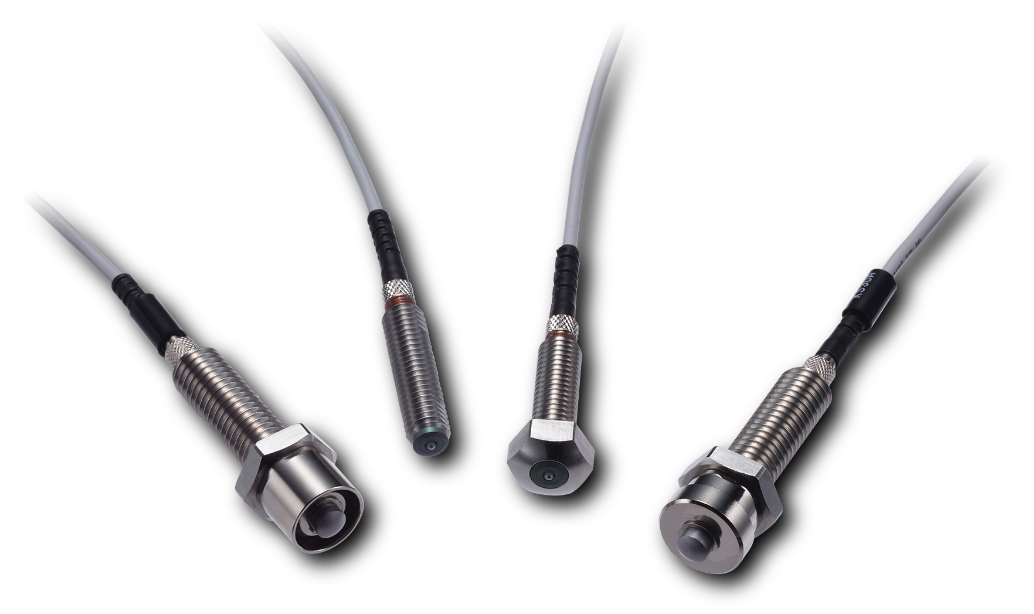
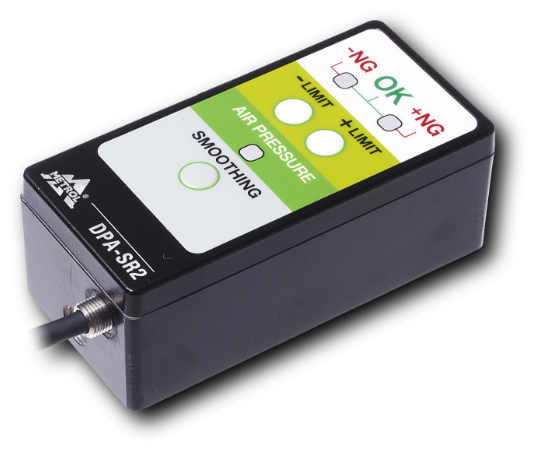
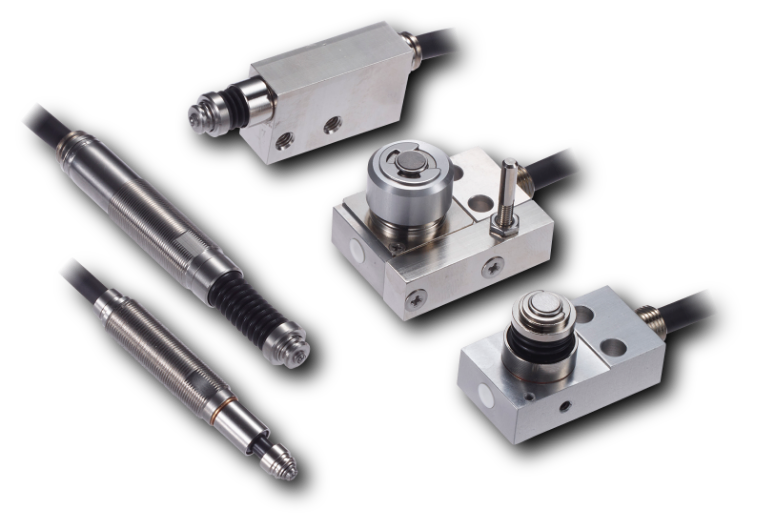
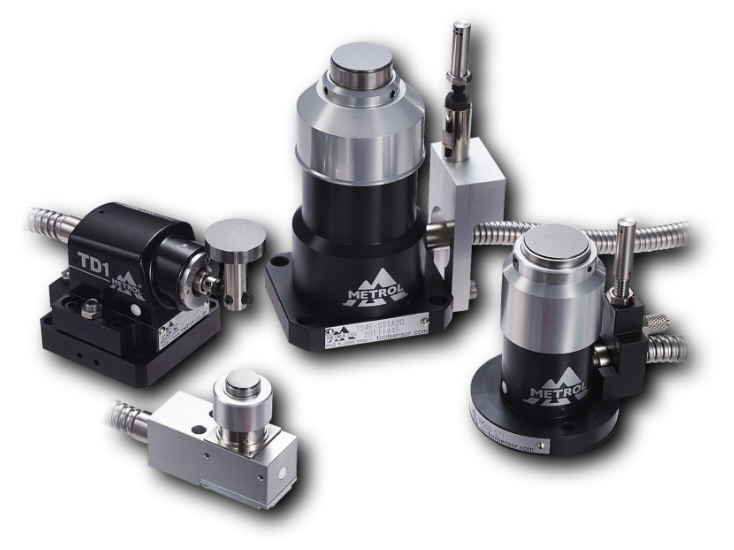
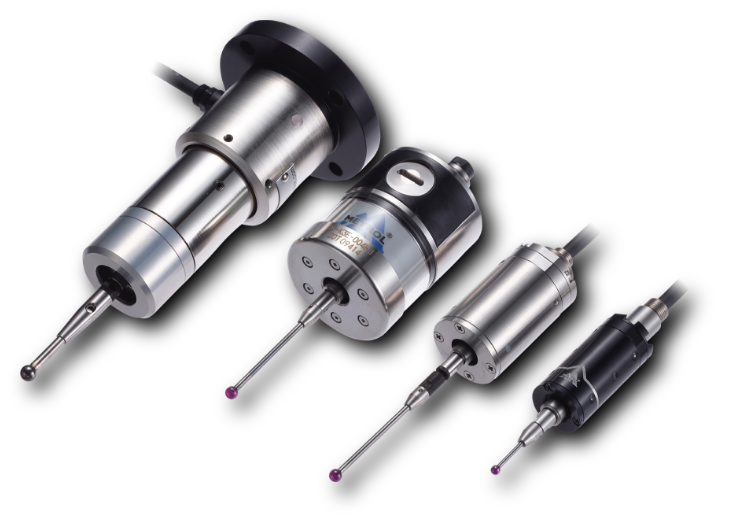
METROL will continue to search for products that are indispensable for future manufacturing.
Product development at METROL began with a "small switch" created by our founder.
At METROL, we continue to develop sensors that are indispensable for future manufacturing
and that will set new standards, such as sensors that combine IoT and wireless power supply.
Feel Free to contact us if you have any questions about our products and technical inquiries.
Our experienced engineers will be more than happy to assist you.
+81 50 5558 7366
Monday - Friday 8:30-17:30 JST.
+81 42 528 1442
Write down your questions
